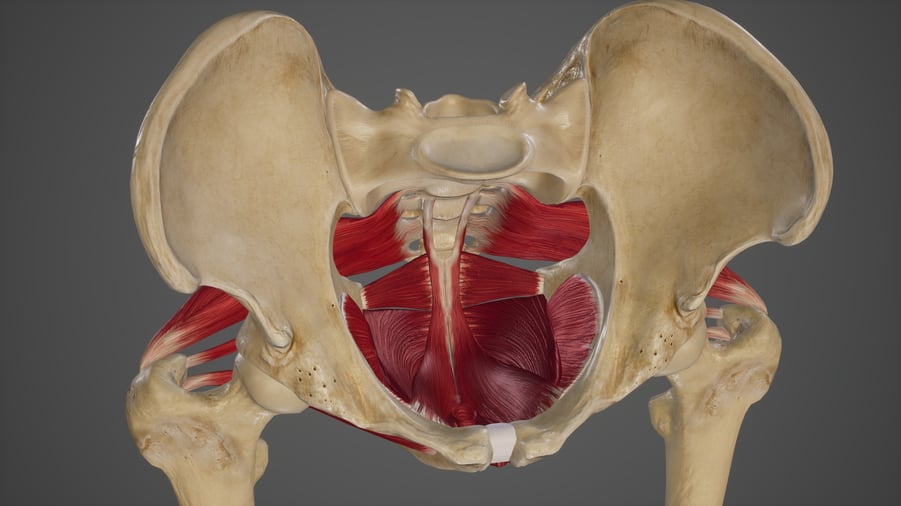Understanding Pelvic Floor Dysfunction: What It Is and How Physical Therapy Can Help

Licensed Physical Therapist, PT, DPT // CFT-L1 // EW Motion Therapy Meadowbrook/280
Pelvic floor dysfunction is a condition that has been steadily gaining awareness, yet many individuals still find themselves unsure about what it entails. While the symptoms can be debilitating, the condition is highly treatable, often without invasive procedures. Physical therapy can often be integral to restoring pelvic floor function - our women’s health team at EW Motion Therapy does this daily for our clients. But even if you decide that our pelvic floor physical therapy doesn’t fit your needs, you can still read on as we define pelvic floor dysfunction, elaborate on the function of the pelvic floor, and explore the various dysfunction symptoms. Lastly, we'll delve into how physical therapy can serve as an effective treatment for this condition.
What is the pelvic floor?
The pelvic floor is a complex structure that may be simply described as a 'hammock' or a 'sling' of muscles stretching across the bottom of the pelvis. These muscles serve multiple functions, primarily supporting pelvic organs such as the bladder, bowel, and uterus (in females).
These muscles are crucial for various physiological functions, including urination, defecation, and, in females, childbirth. The pelvic floor also plays an essential role in sexual function for both genders. So, when the pelvic floor isn't functioning correctly, the repercussions can be widely felt physically and emotionally.

What does the pelvic floor do?
Beyond basic support, the pelvic floor muscles contribute to various crucial bodily activities. These muscles assist in controlling the bladder and bowel, enabling us to 'hold it in' when necessary. They also play a role in sexual arousal, and for women, these muscles are particularly vital during pregnancy and childbirth.
As you can see, the pelvic floor is an integral part of our body's function. It's responsible for aspects of our well-being that many take for granted until something goes wrong. When dysfunction occurs, it can have a considerable impact on your quality of life.
Symptoms of pelvic floor dysfunction
Pelvic floor dysfunction can manifest in various symptoms, making diagnosing it tricky. Common symptoms include pain in the pelvic region, leaking (either urinary or fecal), and pelvic pain during sexual intercourse. It's common for individuals to experience a frequent urge to urinate or difficulty initiating urination.
For women, symptoms may also present during menstrual periods, making them easily mistaken for regular menstrual cramps. The condition can further complicate pregnancy and childbirth, increasing the risk of complications. Men may experience difficulties in sexual performance, including issues like erectile dysfunction, which are often mistakenly attributed to other causes.
How physical therapy can help
When treating pelvic floor dysfunction, physical therapy is a highly effective conservative approach. Physical therapists trained in this specialty can conduct an in-depth evaluation to identify the specific muscles causing issues.
Tailored exercise programs
One standard treatment method involves pelvic floor exercises, known as Kegels. However, each case is unique, and a physical therapist will tailor an exercise program to meet your specific needs. The therapist might use various exercises to help you understand how to correctly engage and relax your pelvic floor muscles. For example, Kegels might not be right for those that need to relax their pelvic floor as opposed to strengthening it.
Manual therapy techniques
In some instances, manual therapy techniques like myofascial release or trigger point therapy may relieve tension in the pelvic floor muscles. These therapies are particularly useful in treating pain and can improve muscle function.
Education and lifestyle changes
An educated patient is an empowered patient. A significant aspect of physical therapy treatment for pelvic floor dysfunction involves educating the patient about their condition. This could include providing insights into lifestyle changes, like diet and fluid intake, which can aid in managing symptoms. Physical therapists can provide valuable information and resources, allowing you to actively participate in your treatment and recovery.
Pelvic floor dysfunction may be complicated, but the first step toward effectively managing it is understanding what it is. Knowing the symptoms can prompt quicker diagnosis and treatment, significantly improving the quality of life for those affected. Physical therapy offers a variety of methods for treating this condition, from tailored exercise programs to manual therapies and educational resources. In approaching this condition with the proper knowledge and professional assistance, relief is not just possible—there is hope. We consider it a privilege at EW Motion Therapy to walk alongside our clients as we help them restore pelvic floor function and return to their favorite activities. If you’re wondering whether pelvic floor physical therapy is right for you, click the button below to download our self-assessment and see if our program fits your needs.

